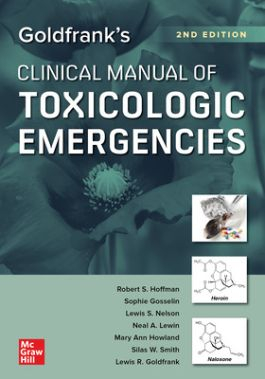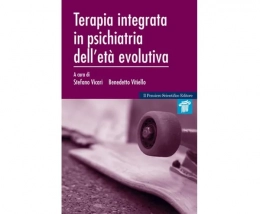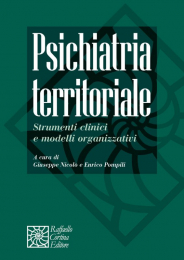Non ci sono recensioni
DA SCONTARE
Derived from the definitive guide to medical toxicology, this hands-on companion provides accurate information for diagnosing and treating poisoned patients on the spot
After more than a decade on the market, Goldfrank’s Toxicologic Emergencies has established itself as the go-to reference for medical toxicology—and this companion manual distills the most important information into a portable, easy-to-navigate resource.
Goldfrank’s Manual of Toxicologic Emergencies distills critical information into short summaries and synopses, so you can use it to treat patients in clinical settings or for quick review of critical topics. Fully updated to ensure all information is completely current, this new edition is filled with tables, figures, images, and other visuals to make finding the right answers quick and easy. Each chapter is a direct distillation of the corresponding chapter in Goldfrank’s Toxicologic Emergencies.
Whether you’re a medical toxicologist, pharmacist, physician, nurse practitioner, or student, Goldfrank’s Manual of Toxicologic Emergencies provides all the right answers where and when you need them.
Covers the full range of xenobiotics:
- Includes pharmaceuticals, recreational drugs, and substances of abuse; food and plant toxins; envenomations; household toxins; pesticides and herbicides; rodenticides; metals; poison gases; and environmental toxins
- Systematically reviews toxicokinetics, pathophysiology, clinical manifestations, diagnostic testing, and management for each xenobiotic
- Provides "Antidotes in Brief"—at-a-glance guides to specific antidotes and their primary applications
Authoritative answers at your fingertips:
- How to manage the poisoned or overdosed patient
- What techniques effectively eliminate toxins
- Which imaging modalities yield the best results
The table of contents (below) will mirror the main text, both for completeness and ease of cross-referencing.
Historical Principles and Perspectives
Toxicologic Misfortunes and Catastrophes in History
PART A
THE GENERAL APPROACH TO THE PATIENT
Initial Evaluation of the Patient: Vital Signs and Toxic Syndromes
Principles of Managing the Acutely Poisoned or Overdosed Patient
SC1. Principles of Antidote Stocking
Decontamination Principles: Prevention of Gastrointestinal Absorption
SC2. Decontamination Principles: Prevention of Dermal, ophthalmic and inhalational Absorption
A1. Activated Charcoal
A2. Whole-Bowel Irrigation and Other Intestinal Evacuants
Principles and Techniques Applied to Enhance Elimination
SECTION I
BIOCHEMICAL AND MOLECULAR CONCEPTS
Chemical Principles
Neurotransmitters and Neuromodulators
SECTION II
PATHOPHYSIOLOGIC BASIS: ORGAN SYSTEMS
Cardiologic Principles I: Electrophysiologic and Electrocardiographic Principles
Cardiologic Principles II: Hemodynamics
Genitourinary Principles
Hepatic Principles
Ophthalmic Principles
Psychiatric Principles
SC4. patient violence
Thermoregulatory Principles
Pediatric Principles
Nonsteroidal Antiinflammatory Drugs
A6. botulinum antitoxin
Food Poisoning
Dieting Xenobiotics and Regimens
Athletic Performance Enhancers
Essential Oils
Plantand Animal-Derived Dietary Supplements
Vitamins
Iron
A7. deferoxamine
C. pharmaceuticals
Pharmaceutical Additives
Antidiabetics and Hypoglycemics/Antiglycemics
A8. Dextrose(d-Glucose)
A9. octreotide
Antiepileptics
A10. l-carnitine
Antihistamines and Decongestants
A11. physostigmine salicylate
Antituberculous Medications
A15. pyridoxine
E. Cardiopulmonary Medications
CASE STUDY 4
Antidysrhythmics
A16. Magnesium Sulfate
Antithrombotics
A17. Protein Complex Concentrate and Novel Antithrombotic Antidotes
A18. Vitamin k1
A19. protamine
?-Adrenergic Antagonists
A20. Glucagon




